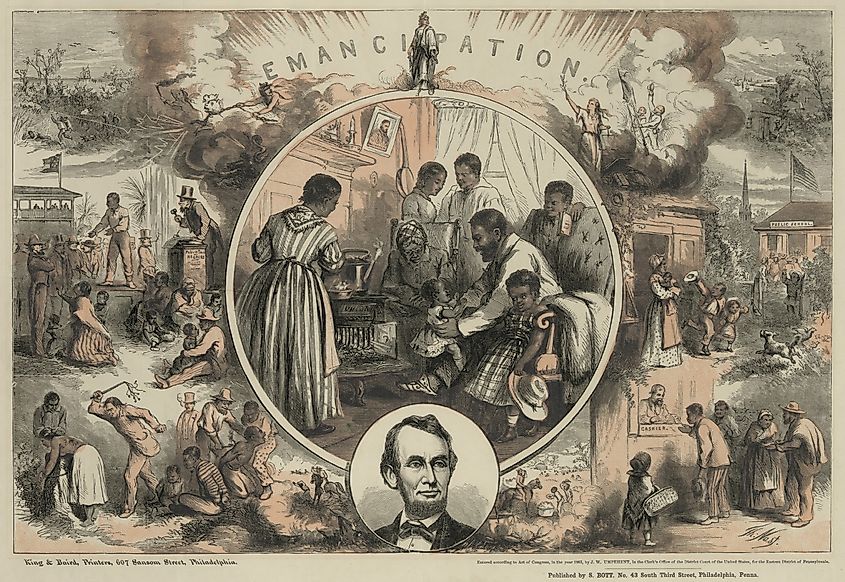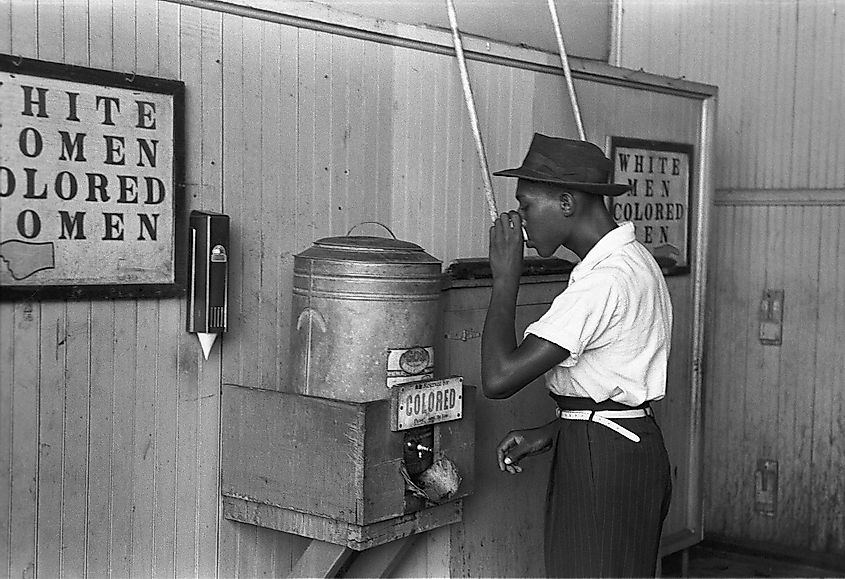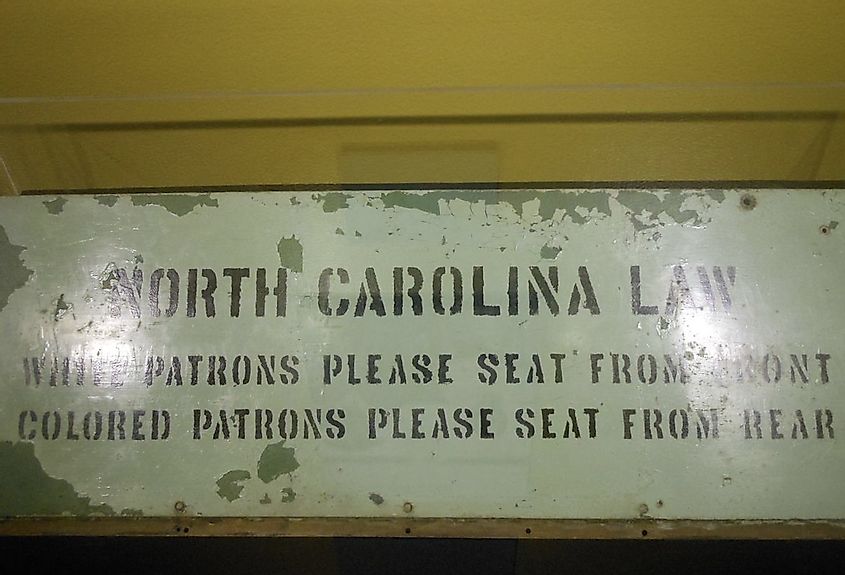
The Black Codes And Jim Crow Laws
The Black Codes were a series of restrictive laws that were imposed on African Americans. They were designed to restrict their rights and freedoms, and limit economic opportunities for them. The Jim Crow laws were a series of state and local statutes that were also designed to deprive African Americans of fundamental rights and economic opportunities while enforcing a system of strict racial segregation. Both the Black Codes and the Jim Crow laws were rooted in the aftermath of the American Civil War and the abolition of slavery. The Black Codes were abolished during the period of American history known as the Reconstruction, but they were soon followed by the Jim Crow laws, which would live on, especially in the US South, for the better part of the 20th century.
The Post-Civil War United States

When the American Civil War ended in 1865, the period of Reconstruction began in which the states that had been part of the secessionist Confederate States of America were reintegrated into the Union. As part of this reintegration, the states that were readmitted into the Union were obliged to abolish the institution of slavery. The 13th Amendment to the US Constitution was passed, abolishing slavery in the United States. The end of slavery meant freedom for approximately 4 million African Americans in the US South. President Abraham Lincoln had hoped to improve the lives of these former slaves. In the last speech that he made, he even suggested that African Americans who fought on the side of the Union during the Civil War should have the right to vote. But only days later, he was assassinated.
Lincoln was succeeded by Andrew Johnson. Johnson was a Southerner who remained loyal to the Union during the Civil War. However, he was adamant on the protection of states’ rights, which is why he opposed giving African Americans in the South even limited suffrage because it meant infringing on the states’ jurisdiction. Also important during the onset of Reconstruction was the fact that although the states of the US South were obliged to uphold the abolition of slavery, they had no obligation to give African Americans any additional liberties. Hence, the states of the US South were free to pass any laws that restricted freedom and economic opportunities for the newly-freed African Americans. Thus began the introduction of the Black Codes.
The Black Codes

The Black Codes were introduced to ensure that the white supremacy created by the institution of slavery remained. They were also introduced to ensure a steady supply of cheap labor. For example, among the Black Codes were vagrancy laws, which stated that an African American could be declared a vagrant if that person was unemployed and had no permanent residence. If a person was declared a vagrant, they were compelled to pay a fine. Those who could not afford to pay the fine were forced into a period of labor.
The Black Codes also restricted economic freedom and opportunities for African Americans. Some states, for instance, limited the kind of property African Americans could own. In other cases, African Americans were forbidden from practicing in certain professions. Other restrictions imposed by states in the US South as part of the Black Codes included preventing African Americans from carrying firearms, or testifying in court, unless the cases in question involved African Americans. Interracial marriage was also forbidden.
The prevalence of the Black Codes in the US South caused an outcry in the Northern states. This outcry was amplified by anti-black riots in Memphis, Tennessee and New Orleans, Louisiana in 1866. In this same year, Republicans in Congress, who supported greater equality for African Americans, introduced a civil rights bill. It was vetoed by the aforementioned President Johnson, but the Radical Republicans, with the support of more moderate Republicans, managed to get Congress to override the presidential veto for the first time in American history. After passing the civil rights law, the Republicans introduced and approved the 14th and 15th Amendments to the Constitution that prevented states from “abridging equality before the law,” and even allowed for the congressional representation of Southern states to be reduced if they tried to prevent suffrage for African Americans. In 1867, the Reconstruction Act was passed, which, among other things, allowed the US military to protect African Americans and their property. Eventually, the Black Codes were repealed, but when Reconstruction ended in 1877, many of them returned in the form of the Jim Crow laws.
Jim Crow Laws

The Jim Crow laws, named for a black minstrel show routine, were meant to marginalize African Americans the same way the Black Codes did. In addition, they enforced a firm system of segregation between people of color and white Americans. Everything from public transportation to city parks was segregated. African Americans were forbidden from living in white neighborhoods. In fact, in some cases, entire towns and cities tried to keep African Americans from entering, displaying signage saying that they were unwelcome.

At first, the Jim Crow laws were largely confined to the rural areas of the United States. Thus, many African Americans moved to more urban areas, where they would not be subject to such laws. However, as more African Americans moved into urban centers, white residents began demanding that Jim Crow laws be applied in cities. Eventually, Jim Crow laws spread throughout the country. In 1896, these laws gained a new level of legitimacy when the US Supreme Court ruled that racially segregated facilities were not unconstitutional so long as they were equal. It was this “separate but equal” principle that allowed Jim Crow laws to endure until the mid-20th century.
The first significant blow to the Jim Crow laws came in 1954, when the Supreme Court heard the famous case of Brown vs. the Board of Education. The court ruled that segregation in the field of education was unconstitutional. The civil rights movement, led by people such as Martin Luther King Jr., and inspired by the actions of African Americans like Rosa Parks, grew in strength during the 1950s and 1960s. In 1964, the Civil Rights Act was passed, which legally ended the segregation and marginalization that the Jim Crow laws brought upon African Americans. But although the Jim Crow laws have all but been relegated to history, the struggle for the civil rights of African Americans is ongoing, and is a central theme in American politics to this day.











